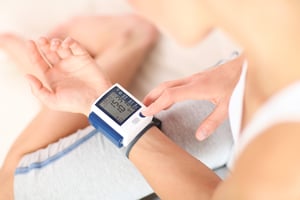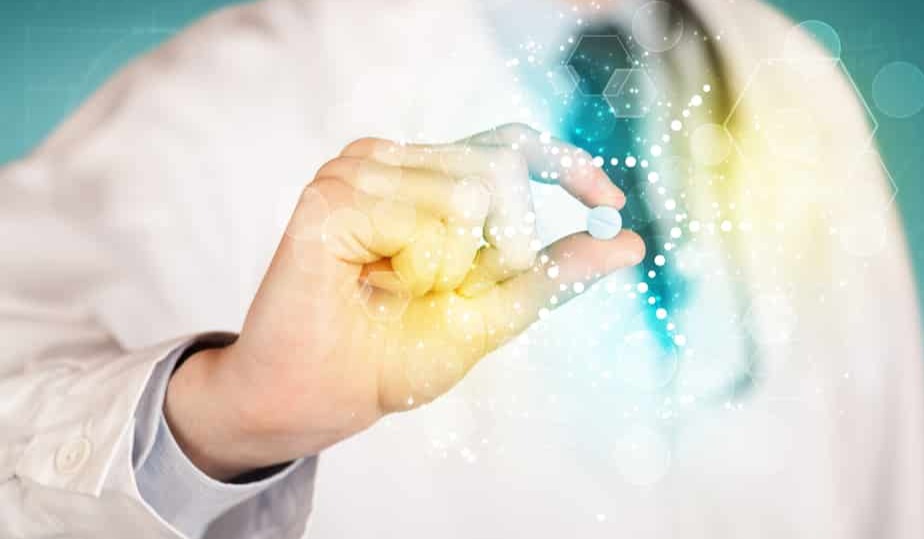Share this
self-monitoring: a medication adherence solution
by Neoteryx Microsampling on Feb 12, 2019 12:47:00 AM
 Medication adherence - the extent to which a patient complies with taking their prescribed medicine - is one of the most important aspects in treatment and recovery. However, studies have shown that up to 50% of people neglect to take their medication as prescribed.
Medication adherence - the extent to which a patient complies with taking their prescribed medicine - is one of the most important aspects in treatment and recovery. However, studies have shown that up to 50% of people neglect to take their medication as prescribed.
Failure to meet the medication intake has been found to result in development of drug resistance, accelerated progression of disease, and development of many irreversible health complications, as well as increased fatalities.
Benefits of Medication Adherence
Beyond the dangers that result from non-adherence as spelled out above, medication adherence presents a number of benefits. One of the main benefits of medication adherence is minimized drug wastage. When a patient follows their prescription to the letter, they are likely to consume fewer drugs during the course of treatment. This is as opposed to taking drugs then leaving them after a while and then going back to the hospital to get more when the illness becomes more severe.
Another benefit is the reduced cost of healthcare. Taking the medication as prescribed ensures quick recovery and, more often than not, one gets better with no need to return the hospital. However, taking some medication but not completing the course or taking the correct dosage hinders healing. The patient ends up spending more money going back to the hospital.
Medication Adherence Solution
 One way to combat the issue of medication non-adherence is to employ self-monitoring. Self-monitoring is among the many patient monitoring techniques that not only track a patient’s progress but also their medication intake and its effectiveness. Among the many areas where self-monitoring has been used is among people with blood pressure issues.
One way to combat the issue of medication non-adherence is to employ self-monitoring. Self-monitoring is among the many patient monitoring techniques that not only track a patient’s progress but also their medication intake and its effectiveness. Among the many areas where self-monitoring has been used is among people with blood pressure issues.
Self-monitoring blood pressure at home has been found to contribute to a reduction of high blood pressure among people with hypertension. Self-monitoring utilizes remote gadgets that enable people to monitor their progress without having to go to the clinic all the time.
Self-monitoring (otherwise known as self-tracking, biomonitoring, or health and wellness monitoring) will continue improving patients’ lives. By self-collecting specimen samples at home for sending to the lab for testing, and by using wearable gadgets that digitally process health data for the patient and their care providers, people are able to work closely with their care team and have more agency in managing their own health to get things back on track.
Digital technologies, wearables, and remote specimen collection are options to think about when devising smarter solutions to the problem of medication non-adherence.
Related Reading:
https://www.neoteryx.com/microsampling-blog/microsampling-for-adherence-testing-of-antipsychotics
https://www.neoteryx.com/microsampling-blog/5-medication-adherence-solutions-that-work
Share this
- Microsampling (206)
- Research, Remote Research (119)
- Venipuncture Alternative (105)
- Clinical Trials, Clinical Research (83)
- Mitra® Device (73)
- Therapeutic Drug Monitoring, TDM (51)
- Dried Blood Spot, DBS (39)
- Biomonitoring, Health, Wellness (30)
- Infectious Disease, Vaccines, COVID-19 (24)
- Blood Microsampling, Serology (23)
- Omics, Multi-Omics (21)
- Decentralized Clinical Trial (DCT) (20)
- Specimen Collection (18)
- Toxicology, Doping, Drug/Alcohol Monitoring, PEth (17)
- Skin Microsampling, Microbiopsy (14)
- hemaPEN® Device (13)
- Preclinical Research, Animal Studies (12)
- Pharmaceuticals, Drug Development (9)
- Harpera Device (7)
- Industry News, Microsampling News (5)
- Antibodies, MAbs (3)
- Company Press Release, Product Press Release (3)
- Environmental Toxins, Exposures (1)
- July 2025 (1)
- May 2025 (1)
- April 2025 (2)
- December 2024 (2)
- November 2024 (1)
- October 2024 (3)
- September 2024 (1)
- June 2024 (1)
- May 2024 (1)
- April 2024 (4)
- March 2024 (1)
- February 2024 (2)
- January 2024 (4)
- December 2023 (3)
- November 2023 (3)
- October 2023 (3)
- September 2023 (3)
- July 2023 (3)
- June 2023 (2)
- April 2023 (2)
- March 2023 (2)
- February 2023 (2)
- January 2023 (3)
- December 2022 (2)
- November 2022 (3)
- October 2022 (4)
- September 2022 (3)
- August 2022 (5)
- July 2022 (2)
- June 2022 (2)
- May 2022 (4)
- April 2022 (3)
- March 2022 (3)
- February 2022 (4)
- January 2022 (5)
- December 2021 (3)
- November 2021 (5)
- October 2021 (3)
- September 2021 (3)
- August 2021 (4)
- July 2021 (4)
- June 2021 (4)
- May 2021 (4)
- April 2021 (3)
- March 2021 (5)
- February 2021 (4)
- January 2021 (4)
- December 2020 (3)
- November 2020 (5)
- October 2020 (4)
- September 2020 (3)
- August 2020 (3)
- July 2020 (6)
- June 2020 (4)
- May 2020 (4)
- April 2020 (3)
- March 2020 (6)
- February 2020 (3)
- January 2020 (4)
- December 2019 (5)
- November 2019 (4)
- October 2019 (2)
- September 2019 (4)
- August 2019 (4)
- July 2019 (3)
- June 2019 (7)
- May 2019 (6)
- April 2019 (5)
- March 2019 (6)
- February 2019 (5)
- January 2019 (8)
- December 2018 (3)
- November 2018 (4)
- October 2018 (7)
- September 2018 (6)
- August 2018 (5)
- July 2018 (8)
- June 2018 (6)
- May 2018 (5)
- April 2018 (6)
- March 2018 (4)
- February 2018 (6)
- January 2018 (4)
- December 2017 (2)
- November 2017 (3)
- October 2017 (2)
- September 2017 (4)
- August 2017 (2)
- July 2017 (4)
- June 2017 (5)
- May 2017 (6)
- April 2017 (6)
- March 2017 (5)
- February 2017 (4)
- January 2017 (1)
- July 2016 (3)
- May 2016 (1)
- April 2016 (2)




No Comments Yet
Let us know what you think